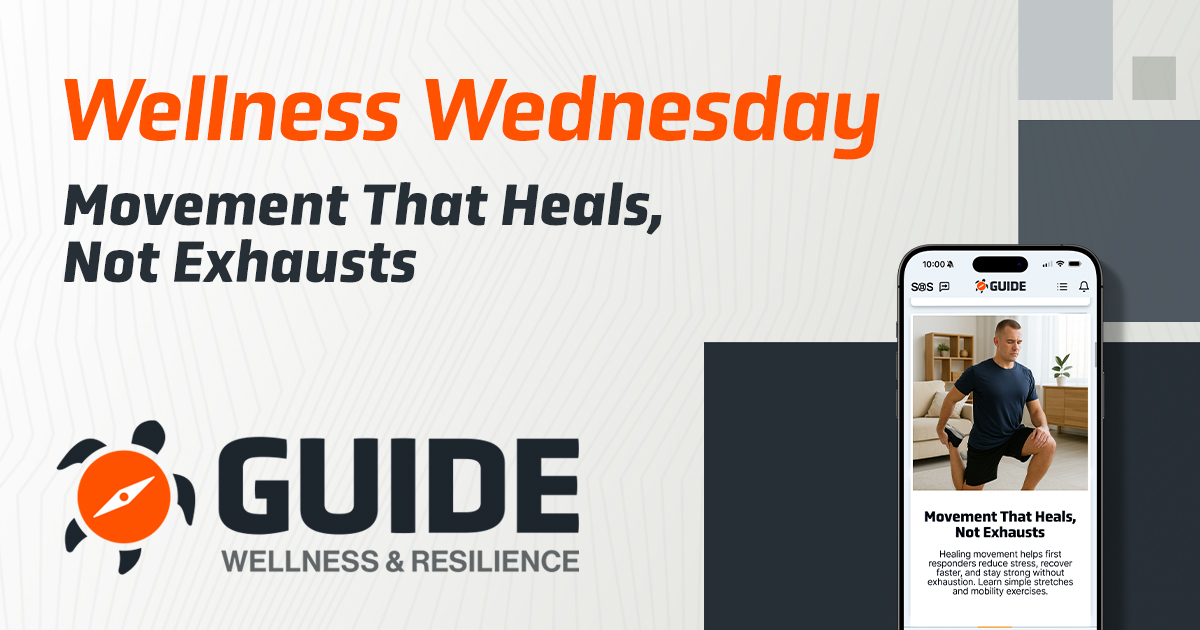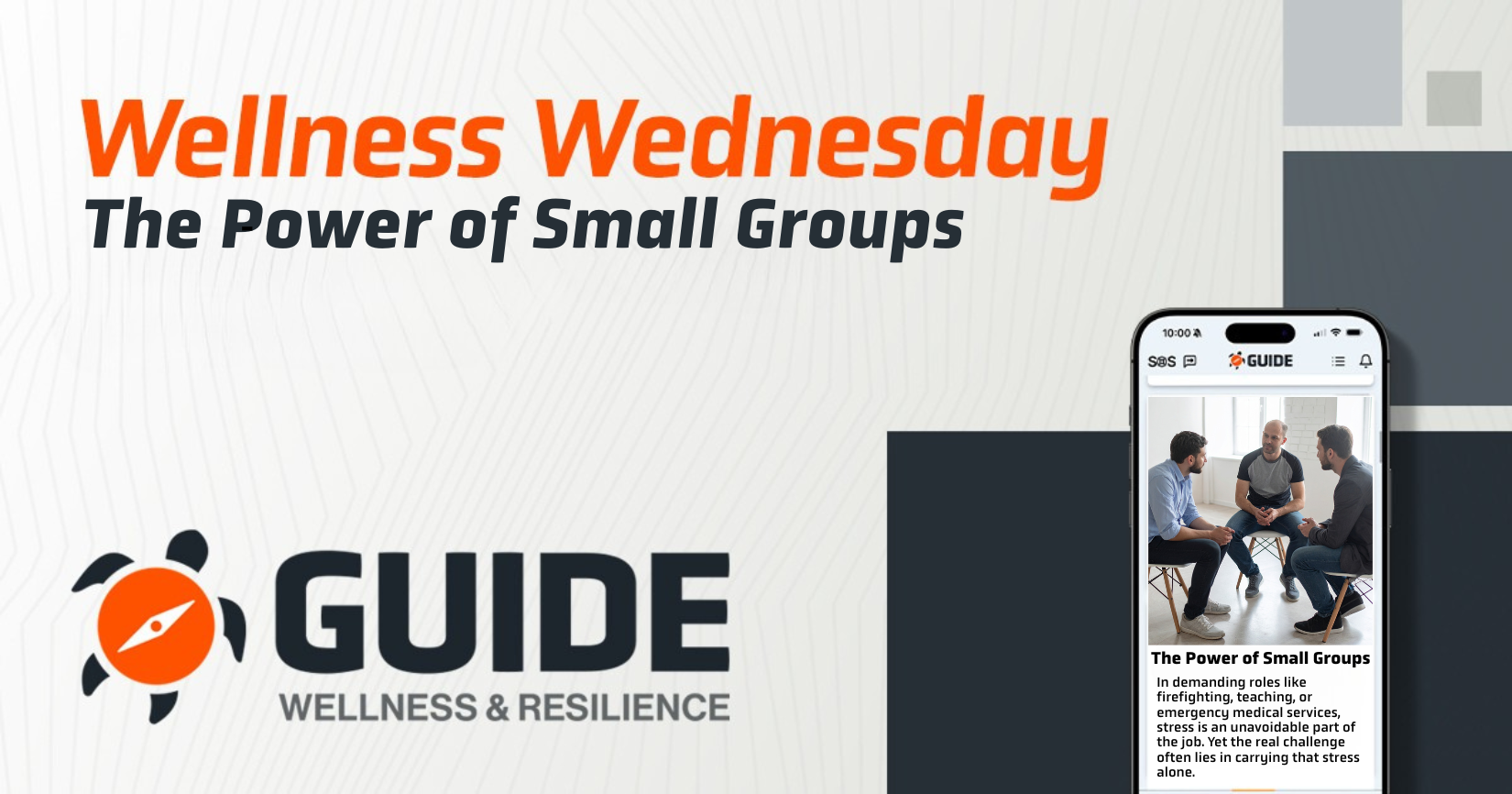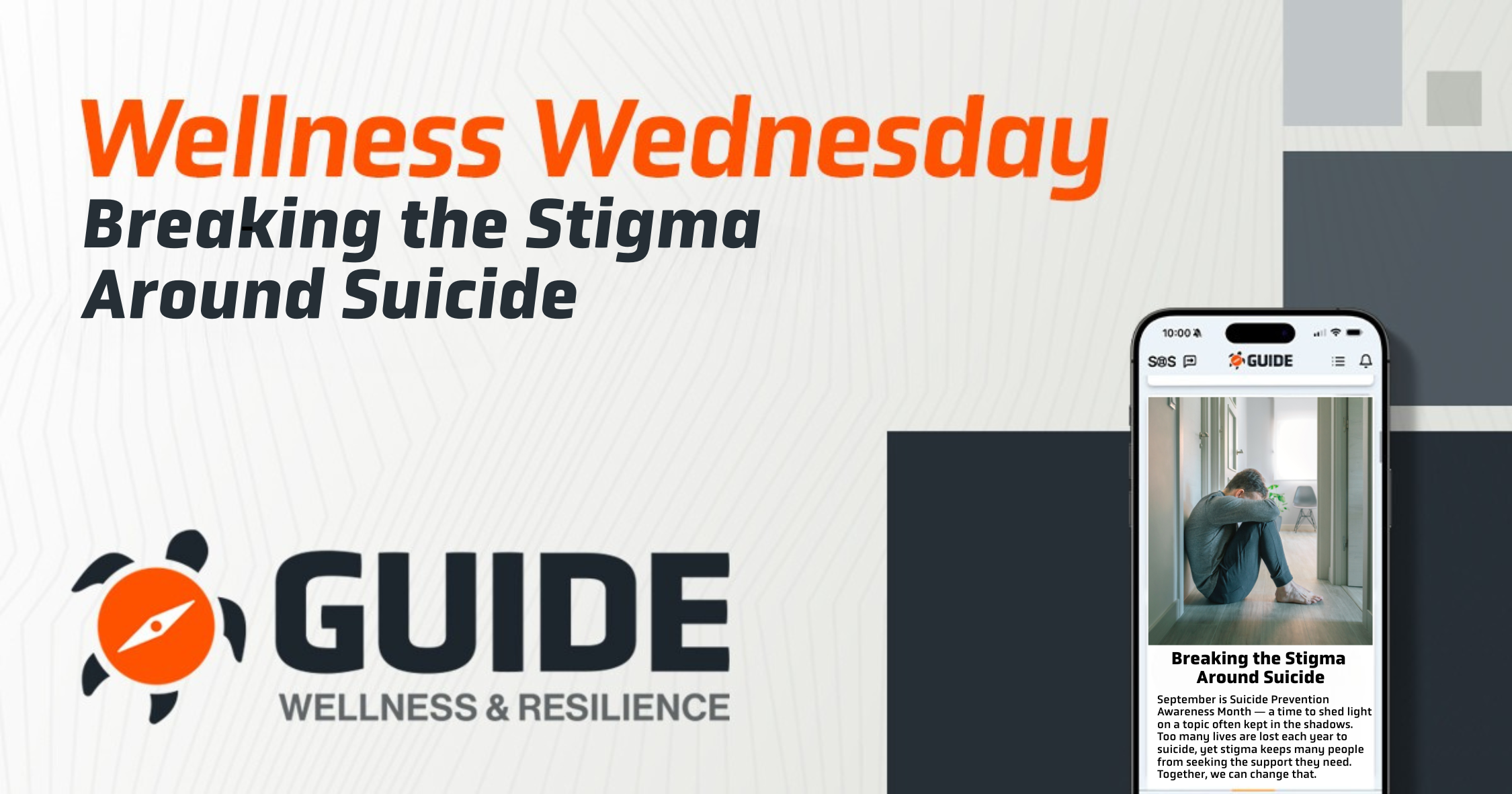When you think of movement, you might think of workouts that leave you drenched in sweat, completely drained, and sore the next day. But movement doesn’t always have to be intense to be effective. In fact, some of the most powerful forms of movement are the ones that help you heal—not the ones that push you to the limit.
For first responders and frontline workers, physical strain is part of the job. Long shifts, heavy gear, awkward positions, and unpredictable environments all take a toll. That’s why it’s so important to include restorative movement in your routine—movement that helps your body recover, not break down.
This week’s Wellness Wednesday is all about how to move your body in ways that reduce stress, support recovery, and build resilience—without exhausting your energy or hurting your performance.
Why Healing Movement Matters for First Responders
You already work hard. Physically. Mentally. Emotionally. Your job puts demands on your muscles, joints, and nervous system that most people don’t face.
Over time, that can lead to:
- Stiffness and soreness
- Chronic tension in your neck, shoulders, and back
- Fatigue and burnout
- Joint pain or limited mobility
- Injuries that take longer to heal
Restorative movement helps you:
✅ Recover faster from physical strain
✅ Ease tight muscles and joints
✅ Calm your nervous system
✅ Improve sleep, mood, and focus
✅ Build strength and flexibility over time
The goal isn’t to push your limits—it’s to support your long-term strength and function.
What Is Healing Movement?
Healing movement is any type of motion that helps your body feel more mobile, more relaxed, and more balanced—instead of more tired.
Think:
- Stretching
- Mobility work
- Light walking
- Breathing with movement
- Foam rolling
- Gentle yoga or bodyweight flow
- Slow, mindful exercises
These movements may not feel “intense,” but they’re powerful. They help your body release built-up tension and reset after hard physical or emotional work.
Healing Movement vs. Exhausting Movement
Here’s how to tell the difference:
| Healing Movement | Exhausting Movement |
|---|---|
| Feels refreshing and energizing | Feels draining or depleting |
| Reduces soreness and stiffness | Increases muscle pain and fatigue |
| Calms your mind and breathing | Spikes your heart rate and stress levels |
| Helps you recover | Pushes your limits |
| You feel better after | You feel beat up after |
There’s nothing wrong with challenging workouts—but if your job already challenges your body daily, you need a balance. Healing movement fills that gap.
Signs Your Body Needs Restorative Movement
You might benefit from healing movement if:
- You wake up feeling sore or stiff
- Your body feels tense even on your days off
- You’re too tired for a full workout
- You feel mentally “foggy” or anxious
- You sit or stand in one position for long periods
- You have limited time but still want to move
Restorative movement is especially helpful after a long shift, during recovery days, or when you’re mentally or physically worn down.
Simple Healing Movements You Can Do Anywhere
Here are eight easy ways to get started with movement that heals. You can do these at home, at the station, or during a break—no gym required.
1. Standing Forward Fold (Back & Hamstrings)
How to do it:
- Stand with feet hip-width apart
- Slowly bend forward at the hips
- Let your head and arms hang down
- Hold for 30 seconds, breathing deeply
Why it helps:
Releases lower back, stretches hamstrings, and relaxes the spine.
2. Shoulder Rolls + Neck Stretch
How to do it:
- Roll both shoulders forward 10 times, then backward
- Gently tilt your head toward one shoulder and hold
- Repeat on both sides
Why it helps:
Relieves tension from gear, posture, and stress.
3. Deep Breathing with Arm Raise
How to do it:
- Inhale and raise arms slowly overhead
- Exhale and lower arms back down
- Repeat 5–8 times
Why it helps:
Calms the nervous system and improves oxygen flow.
4. Seated Hip Opener (Figure-4 Stretch)
How to do it:
- Sit in a chair
- Cross one ankle over the opposite knee
- Gently press down on the raised leg
- Hold 30 seconds each side
Why it helps:
Opens tight hips from long hours sitting or standing.
5. Cat-Cow Stretch (Spine Mobility)
How to do it:
- On hands and knees, inhale and arch your back (cow)
- Exhale and round your spine (cat)
- Repeat slowly for 1–2 minutes
Why it helps:
Restores spinal mobility and eases lower back strain.
6. Wall Calf Stretch
How to do it:
- Place hands on a wall
- Step one foot back and press the heel down
- Hold for 20–30 seconds each side
Why it helps:
Reduces tightness in the legs and improves circulation.
7. Walking Breaks
How to do it:
- Walk at an easy pace for 5–10 minutes
- Focus on breathing and posture
Why it helps:
Improves blood flow, clears mental fog, and boosts energy.
8. Foam Rolling (Self-Massage)
How to do it:
- Use a foam roller on your back, legs, or shoulders
- Roll slowly and gently over tight areas
Why it helps:
Breaks up muscle knots, increases recovery, and relieves pain.
Tips to Build Healing Movement into Your Routine
Making movement a daily habit doesn’t have to be time-consuming. Try these easy ways to fit it into your schedule:
✅ Start and end your day with 5 minutes of movement
Stretch before bed or after waking to loosen up and reset.
✅ Stack with existing habits
Do shoulder rolls while brushing your teeth, or calf stretches while waiting for your coffee.
✅ Use it as a workday reset
Take a 3-minute movement break between calls or during reports.
✅ Practice movement on your rest days
Instead of skipping activity completely, choose gentle recovery movement.
✅ Keep it simple and consistent
You don’t have to do every stretch—just pick 2 or 3 that help, and repeat them often.
Restorative Movement Helps Mental Health, Too
Moving your body gently also helps clear your mind and settle your emotions. It:
- Reduces cortisol (your stress hormone)
- Increases serotonin and dopamine (feel-good chemicals)
- Improves sleep and focus
- Eases anxiety and emotional tension
Think of it as emotional recovery through physical motion.
As a first responder or frontline worker, you give a lot. To your team. To your community. To the job. But you can’t keep giving from a body that’s run down and a mind that’s worn out.
That’s why healing movement matters. It’s a simple, powerful way to take care of yourself, ease stress, and feel better from the inside out.
So today, instead of pushing harder, pause and move in a way that restores. Your body will thank you. Your mind will thank you. And you’ll be stronger for it tomorrow.




